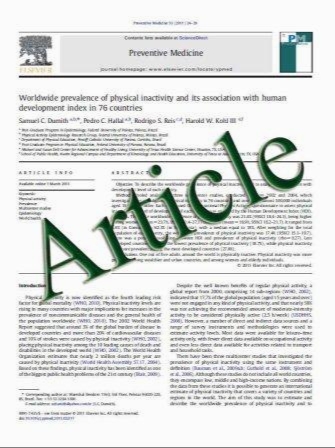Low bone density and bone metabolism alterations in Duchenne muscular dystrophy: response to calcium and vitamin D treatment
- نوع فایل : کتاب
- زبان : انگلیسی
- مؤلف : M. L. Bianchi & L. Morandi & E. Andreucci & S. Vai & J. Frasunkiewicz & R. Cottafava
- چاپ و سال / کشور: 2010
Description
Summary Boys with Duchenne muscular dystrophy often have reduced bone mass and increased fracture risk. In this prospective study on 33 patients, calcifediol (25-OH vitamin D3) plus adjustment of dietary calcium to the recommended dose reduced bone resorption, corrected vitamin D deficiency, and increased bone mass in about two-thirds of cases. Introduction Low BMC and BMD and bone metabolism alterations are frequent in boys with Duchenne muscular dystrophy (DMD), especially now that long-term glucocorticosteroid (GC) treatment is the standard of care. This prospective study was designed to evaluate the effects of a first-line treatment (25-OH vitamin D3 [calcifediol] plus adjustment of dietary calcium to the recommended daily dose) on bone. Methods Thirty-three children with DMD on GC treatment were followed for 3 years: one of observation and two of treatment. Main outcome: spine and total body BMC and BMD increase; secondary outcome: changes in bone turnover markers (C-terminal [CTx] and N-terminal [NTx] telopeptides of procollagen type I; osteocalcin [OC]). Results During the observation year, BMC and BMD decreased in all patients. At baseline and after 12 months, serum CTx and urinary NTx were higher than normal; OC and parathyroid hormone at the upper limit of normal; 25- OH vitamin D3 significantly lower than normal. After 2 years of calcifediol and calcium-rich diet, BMC and BMD significantly increased in over 65% of patients, and bone metabolism parameters and turnover markers normalized in most patients (78.8%). During the observation year, there were four fractures in four patients, while during the 2 years of treatment there were two fractures in two patients. Conclusions Calcifediol plus adequate dietary calcium intake seems to be an effective first-line approach that controls bone turnover, corrects vitamin D deficiency, and increases BMC and BMD in most patients with DMD. Lack of response seems related to persistently high bone turnover.
Osteoporos Int (2011) 22:529–539 DOI 10.1007/s00198-010-1275-5


